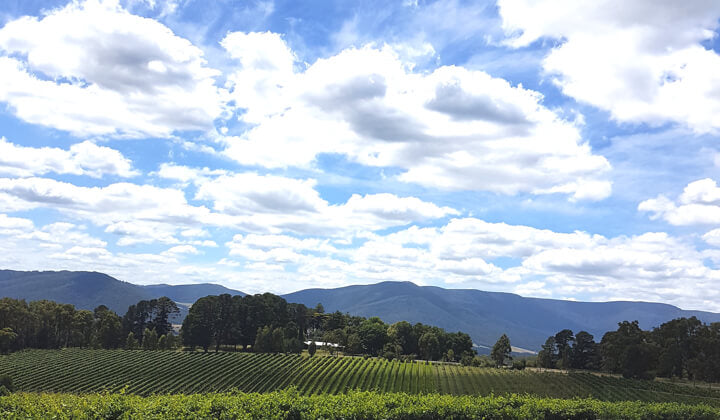The Yarra Valley is under attack.
First, from the insidious creep of the phylloxera bug that threatens to take down every vine in the region raised on its own roots. Second, from rising temperatures, particularly on the Valley Floor. I encourage the climate deniers out there to ask a grape grower in the Lower Yarra about climate change for a swift and emphatic smackdown of their scepticism.
With so much of the Yarra’s sterling modern-day reputation based around the output of premium Pinot Noir and Chardonnay, and with many growers/producers facing replanting their vineyards over the coming years from either infestation or dropping quality of their Pinot Noir and Chardonnay, the question is: What Do You Plant Now?
There are differing schools of thought. In a chat with Oakridge’s David Bicknell recently he told how they are in the early stages of planning the replanting of the Oakridge ‘Winery Block’ in the next 2-3 years.

“I think we’re going to roll the dice and double down on Bordeaux varieties,” he says. “The top Yarra Valley Cabernet blends are some of the finest in the country so we are looking at more plantings of Cabernet Sauvignon and Merlot, some Petit Verdot, Cabernet Franc. As it warms up on the floor, we think these varieties, and Shiraz, should thrive.”
Crunch time is here already for some. There are producers who are already feeling the phylloxera pinch. The 2014 vintage was the final release of Mac Forbes’ Hugh Cabernet blend from the original Gruyere vineyard. The vines from the old vineyard now ripped up and being replaced, having succumbed to the hungry insect army. A little Merlot still in the ground the only remnants of a vineyard that was so close to Mac’s heart. And he’s not alone.
Some are looking to varieties native to the Mediterranean for the future. Sangiovese, Barbera, and Nebbiolo all rearing their heads across the Yarra. Luke Lambert’s exquisite Nebbiolo perhaps the most cogent example of the suitability of Italian varieties to the region.
Lou Primavera’s vineyard high in the hills between Hoddles Creek and Woori Yallock occupies prime Pinot Noir and Chardonnay real-estate. While his Burgundian varieties are both highly sought after from other high-profile producers in the area, it’s the Sangiovese and Nebbiolo which may have the most interesting future. It’s an eclectic collection of varieties on Lou’s block, with Arneis and Barbera planted alongside more mainstream Yarra varieties. Lou knows that currently, some years these longer hang-time varieties are just never going to get ripe. But in 10 or 20 years time, who knows. It’s a gamble he’s willing to take.

There are plenty of options out there. Tim Shand’s first crack at Gamay for Punt Road showed plenty of promise. Shiraz, ever reliable, works well in the warmer pockets of the Yarra (but do we really need more Shiraz?). The Portuguese varieties on Yarra Yering have always had a cult following, perhaps some may also pursue that path. Dr. Carrodus’s plantings of Touriga Nacional, Tinta Roriz and Sousao may turn out to to be more prophetic than most thought at the time.
One thing’s for sure: the face of the Yarra Valley is changing. It’s decision time for many of the growers in the region and so much depends on where they lay their chips. In the future it seems likely that the Yarra will have some sort of viticultural split-personality: the vignerons in the higher, cooler spots monopolising the Pinot Noir and Chardonnay market, and those on the floor owning the Bordeaux and possibly Italian side of things.
As the divide between the Upper and Lower Yarra grows, anything is possible. The opportunities are plentiful at the moment when change is being forced upon them. It will be an interesting thing to observe over the coming years as the Yarra Valley re-shapes its future identity because right now, nobody really knows....


